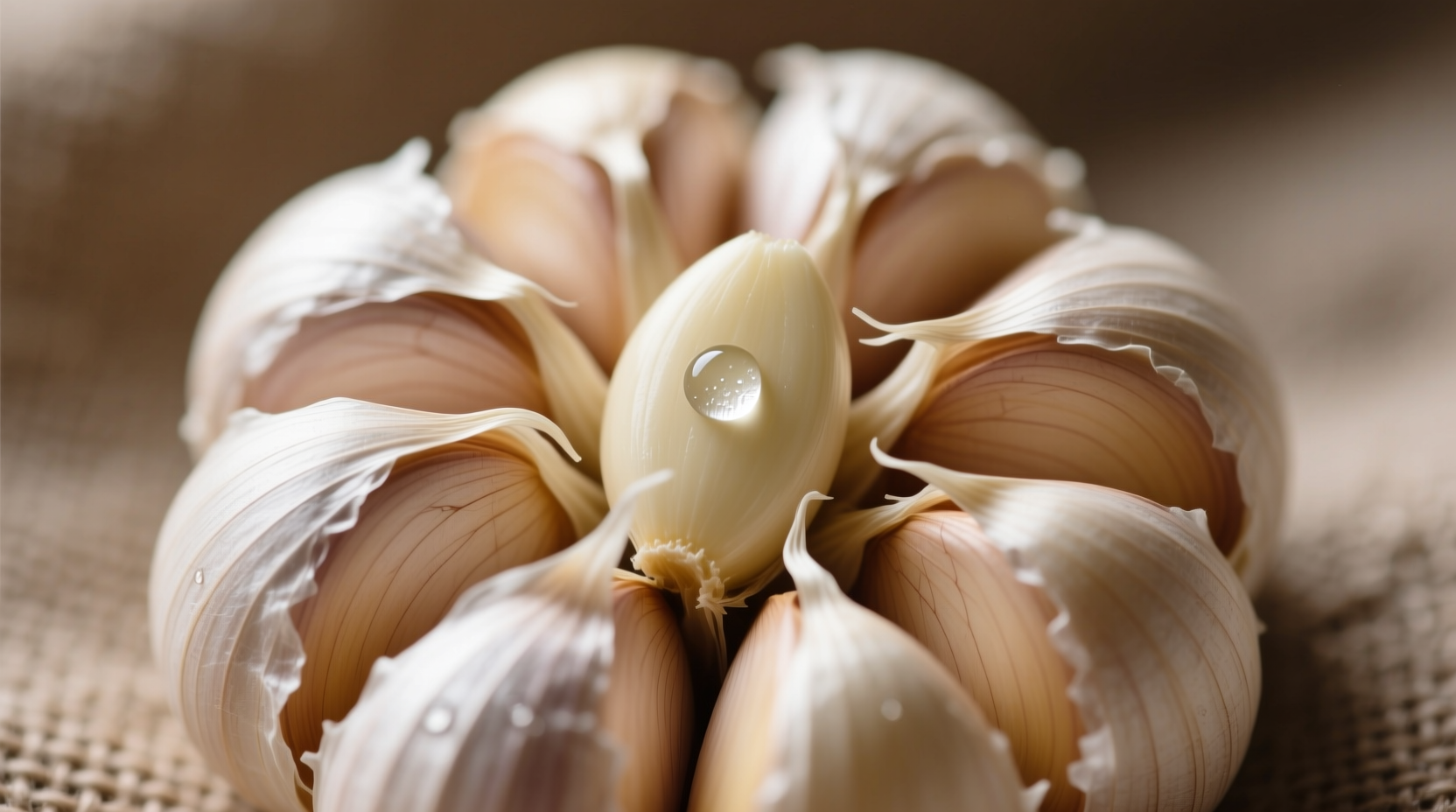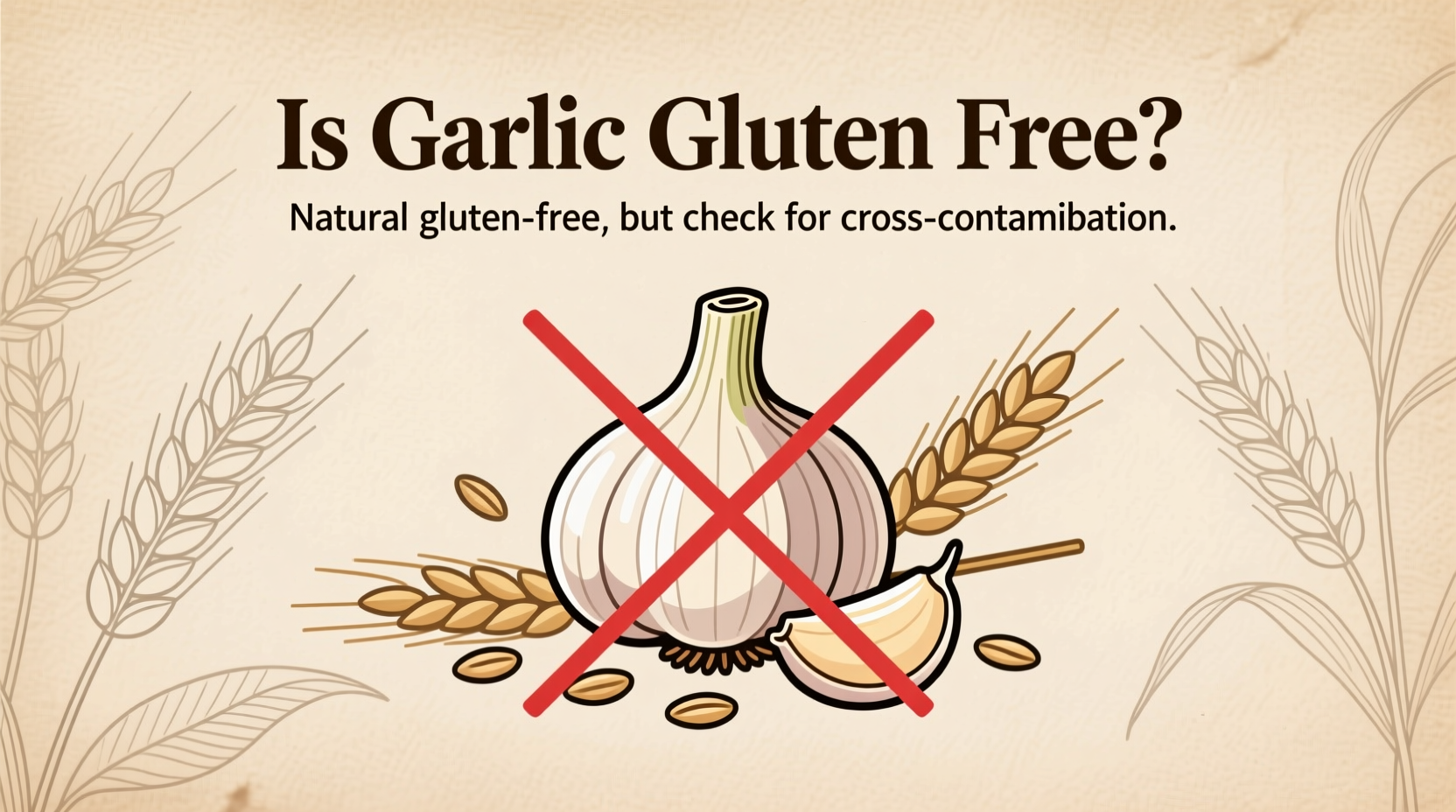For those managing celiac disease or gluten sensitivity, understanding which garlic products are safe is crucial for maintaining a strict gluten-free diet. This comprehensive guide provides evidence-based information to help you make informed choices about garlic consumption.
Why Pure Garlic Is Naturally Gluten-Free
Garlic (Allium sativum) belongs to the onion family and is a bulb vegetable, not a grain. Gluten is a protein composite found exclusively in wheat, barley, rye, and their derivatives. Since garlic grows underground as a root vegetable, it contains no gluten proteins in its natural state.
According to the Celiac Disease Foundation, "All fresh fruits and vegetables, including garlic, are naturally gluten-free and safe for people with celiac disease." This biological fact remains consistent across all garlic varieties, from common supermarket bulbs to specialty heirloom types.

When Garlic Products Might Contain Gluten
While pure garlic is gluten-free, processed garlic products require careful examination. The FDA's gluten-free labeling regulations state that products labeled "gluten-free" must contain less than 20 parts per million (ppm) of gluten. However, not all garlic products carry this certification.
| Garlic Product Type | Gluten Risk Level | Key Considerations |
|---|---|---|
| Fresh garlic bulbs | None | Naturally gluten-free; no processing required |
| Minced garlic in jars | Low to Moderate | Check for vinegar or preservatives that may contain gluten |
| Garlic powder | Moderate | Some brands add anti-caking agents containing gluten |
| Garlic salt | High | Often contains wheat-derived fillers; requires label verification |
| Pre-marinated garlic products | High | Soy sauce and other marinades frequently contain wheat |
Understanding Cross-Contamination Risks
Cross-contamination represents the most significant concern for gluten-sensitive individuals using processed garlic products. The Beyond Celiac organization explains that "shared equipment in manufacturing facilities can introduce gluten into otherwise gluten-free products."
Manufacturers using the same production lines for gluten-containing and gluten-free products without proper sanitation between runs create potential contamination points. This is particularly relevant for garlic powder and minced garlic products that undergo industrial processing.
Practical Guidelines for Safe Garlic Consumption
Follow these evidence-based recommendations to safely incorporate garlic into your gluten-free diet:
- Choose certified products: Look for the Gluten-Free Certification Organization (GFCO) seal, which requires products to contain less than 10 ppm of gluten
- Read ingredient lists carefully: Watch for hidden gluten sources like modified food starch, maltodextrin, or hydrolyzed vegetable protein that may derive from wheat
- Prepare fresh garlic yourself: Peeling and mincing fresh garlic at home eliminates processing risks
- Contact manufacturers: When in doubt, call customer service to verify gluten testing protocols
- Be cautious with restaurant garlic: Pre-minced garlic in restaurants often comes from facilities with gluten-containing products
Common Misconceptions About Garlic and Gluten
Several persistent myths cause unnecessary dietary restrictions. Research from the Journal of Human Nutrition and Dietetics confirms that "no scientific evidence exists that garlic contains gluten or triggers gluten-related disorders through mechanisms other than actual gluten contamination."
Some individuals report digestive discomfort after consuming garlic, which they mistakenly attribute to gluten. This reaction typically stems from FODMAP sensitivity (garlic contains fructans) rather than gluten exposure. If you experience symptoms after eating pure garlic, consult a registered dietitian for proper diagnosis.
Special Considerations for Different Garlic Forms
Understanding the specific risks associated with various garlic preparations helps make informed choices:
Fresh Garlic Bulbs
Completely gluten-free with no risk of contamination. The protective papery skin provides a natural barrier against environmental contaminants. Simply peel and use as needed.
Garlic Powder
While pure garlic powder should be gluten-free, many commercial products add cornstarch or wheat flour as anti-caking agents. The FDA requires these additives to be listed in ingredients, but "spices" or "natural flavors" may hide gluten-containing components.
Minced Garlic in Jars
These products often contain citric acid or vinegar as preservatives. While these ingredients are typically gluten-free, manufacturing processes may introduce cross-contamination. Opt for brands that specify "gluten-free" on the label and use dedicated gluten-free facilities.
Garlic Salt and Seasoning Blends
These products pose the highest risk, as salt manufacturers frequently use wheat flour as a flow agent. Always verify that the product carries a gluten-free certification, as ingredient lists alone may not reveal processing risks.
When to Consult a Healthcare Professional
If you experience symptoms after consuming certified gluten-free garlic products, consult a gastroenterologist or registered dietitian specializing in celiac disease. They can help determine whether your reaction stems from:
- Non-celiac gluten sensitivity (if symptoms occur with gluten exposure)
- FODMAP intolerance (common with garlic and onions)
- Other digestive conditions requiring different management approaches
Remember that properly diagnosed celiac disease requires strict avoidance of gluten, but not necessarily garlic, when sourced carefully.











 浙公网安备
33010002000092号
浙公网安备
33010002000092号 浙B2-20120091-4
浙B2-20120091-4